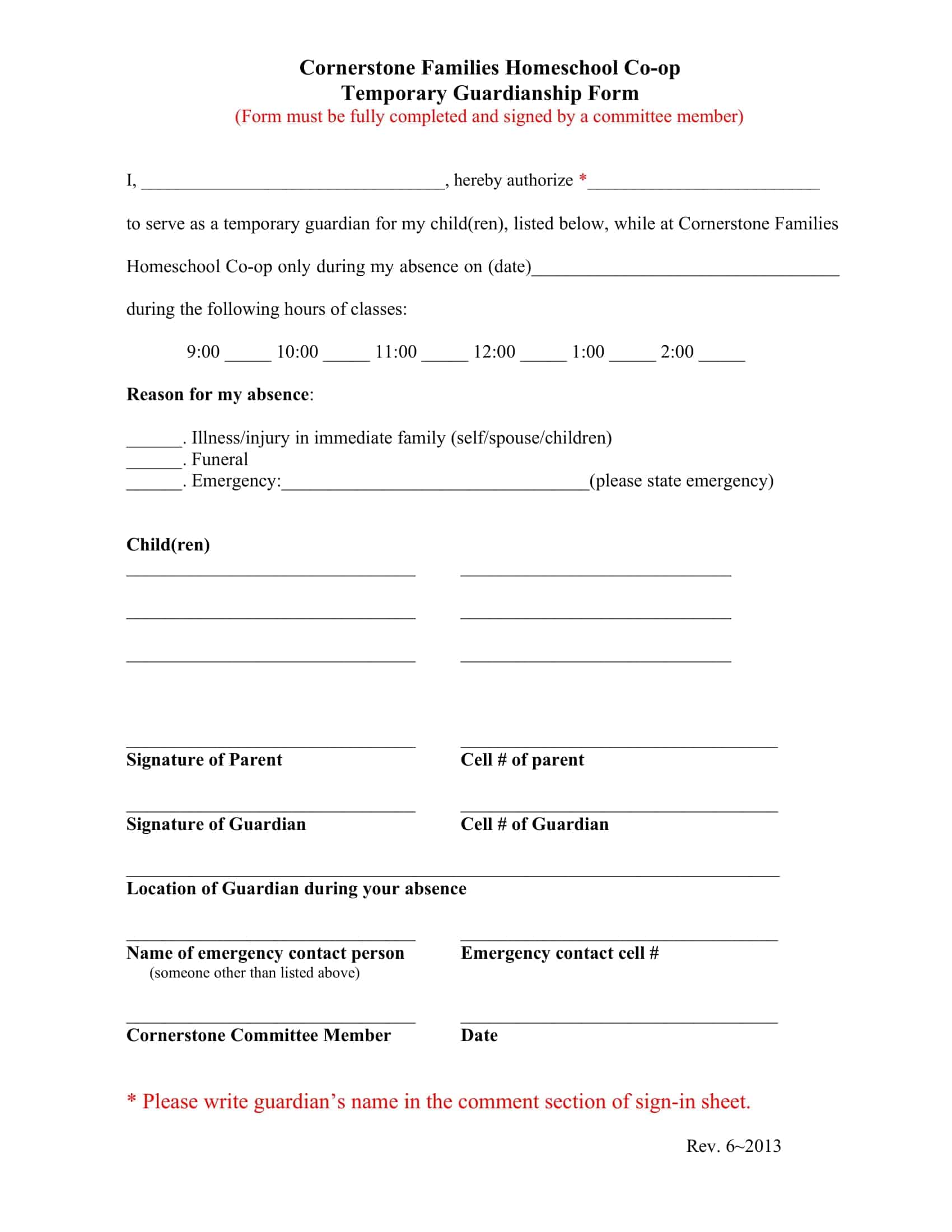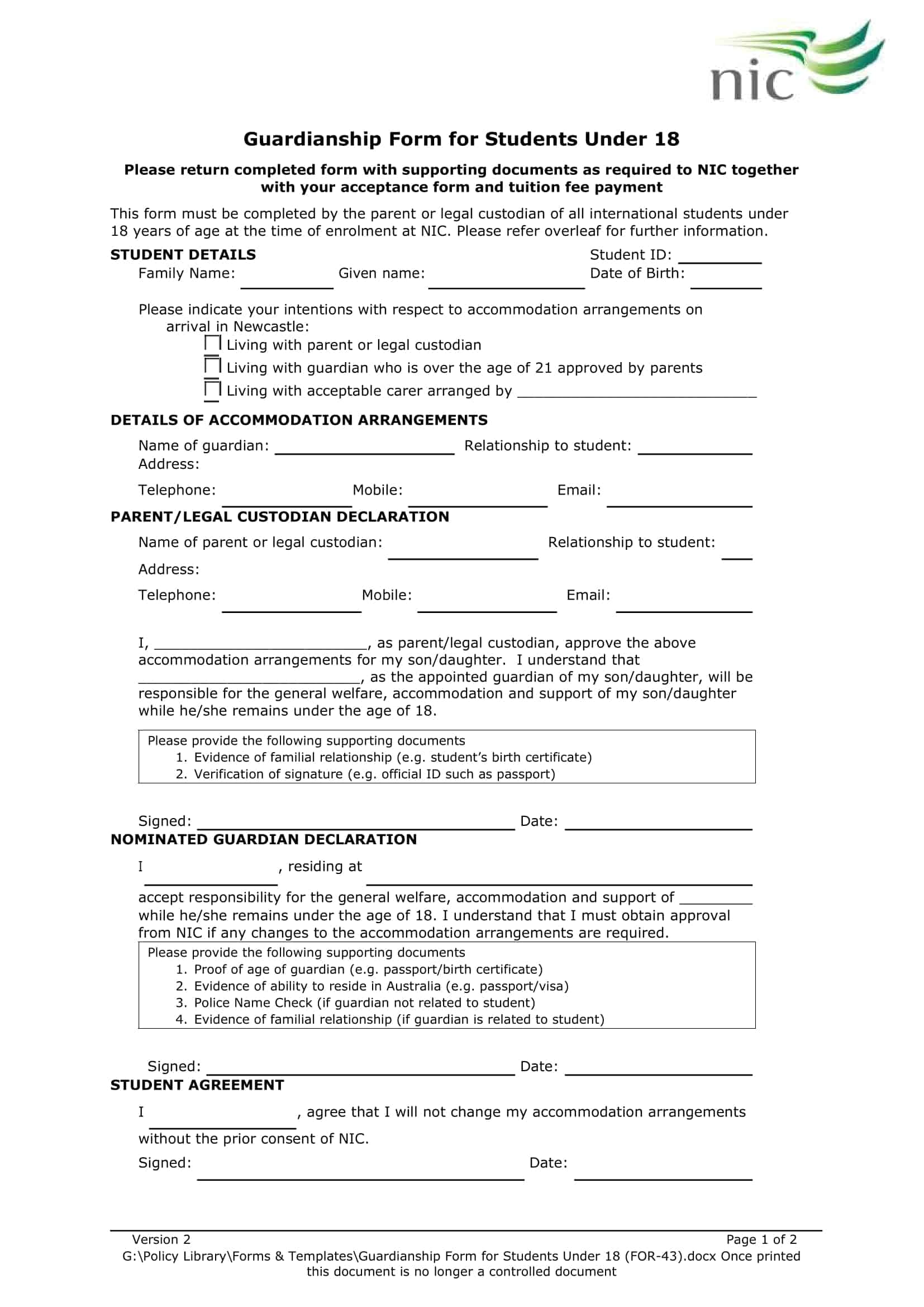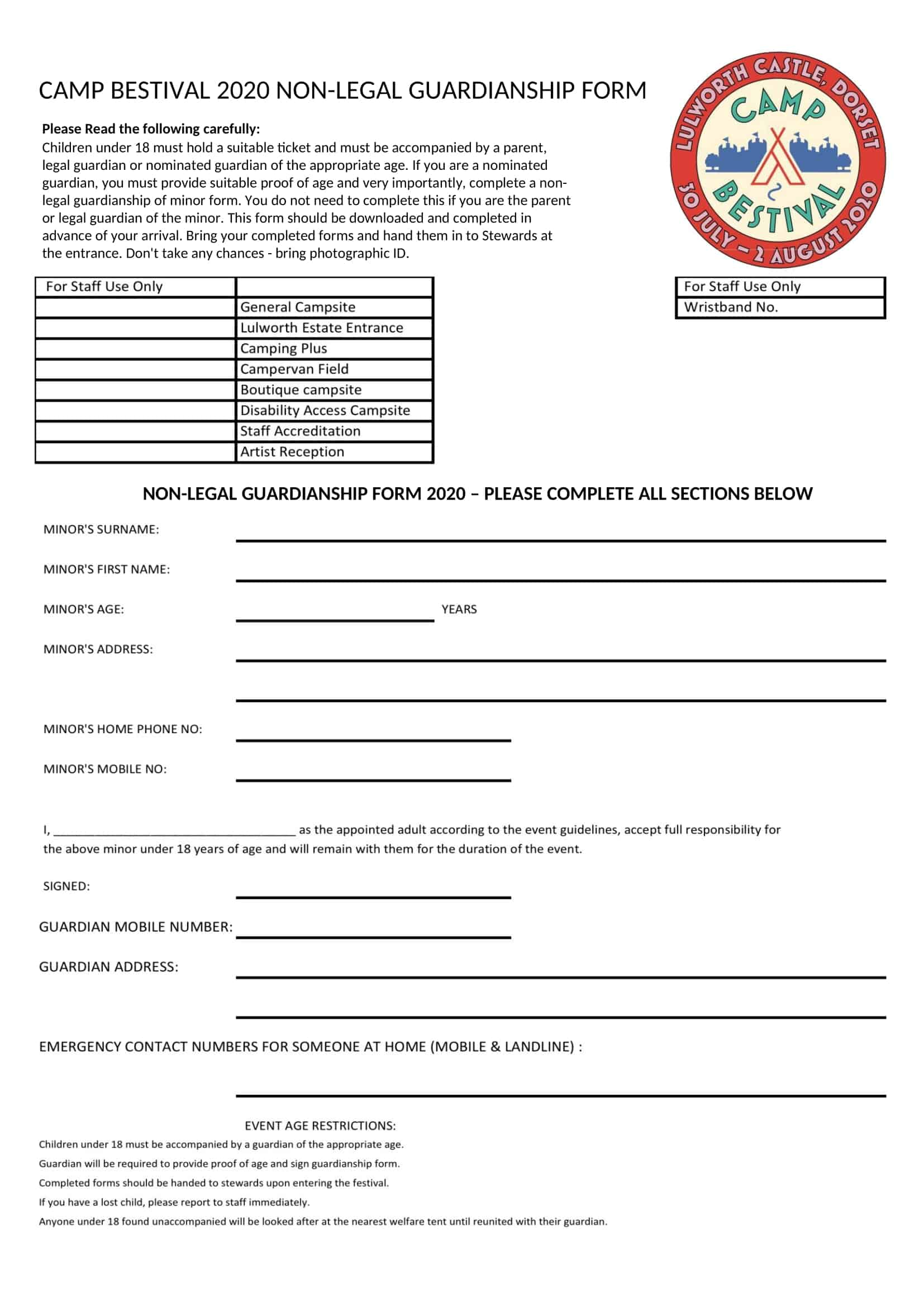In some situations, a child may need to be cared for by someone other than their parents, such as in the event of a parent’s accident, severe illness, or death. To legally appoint a guardian, official guardianship forms must be completed.
It’s important to note that these forms are not a substitute for filing a formal guardianship case, and it should be clearly indicated whether the guardianship is permanent or temporary when filling out the legal guardianship form.
Table of Contents
What is a guardianship form?

A guardianship form is a legal document that is used to appoint a guardian for a minor child or for an incapacitated adult. The form outlines the responsibilities and authority of the guardian and is usually filed with a court or government agency.
The purpose of a guardianship form is to ensure that the person who is being cared for has a responsible and trustworthy guardian in place who will make decisions and act on their behalf.
Guardianship Form Templates
Ensure the well-being and care of a minor or an incapacitated individual with our comprehensive collection of free printable Guardianship Form templates. These templates provide a legally binding framework to establish guardianship arrangements, allowing responsible individuals to take on the role of guardians and make important decisions on behalf of the person in need.
Customize the templates to include specific details about the guardian, ward, and the scope of authority granted. Whether you’re seeking temporary or permanent guardianship, our templates offer a clear and organized format to document the necessary information and ensure compliance with legal requirements. Download now and secure the legal protection and support needed for those who depend on you.
Meaning to become a legal guardian of a child
Becoming a legal guardian of a child means that you have been appointed by a court to make decisions and act on behalf of the child in place of their parents. As a legal guardian, you have responsibility for the child’s care, well-being, and upbringing, including making decisions about their education, medical treatment, and other important matters.
The process of becoming a legal guardian typically involves filing the necessary forms and attending a court hearing to prove that you are fit to be a guardian and that the guardianship arrangement is in the best interests of the child. Once the court grants the guardianship, you have the same legal responsibilities as a parent and can make decisions on behalf of the child as if you were their biological parent.
It is a serious responsibility to become a legal guardian, and it can also be a rewarding experience to care for a child and help them grow and develop. If you are considering becoming a legal guardian, it’s important to carefully consider the commitment and responsibilities involved and to seek the assistance of a legal professional if needed.
Types of guardianship forms
There are five main types of guardianship forms:
Guardianship of a minor child: This type of form is used to appoint a guardian for a child who is under the age of 18 and whose parents are unable or unwilling to care for them. The guardian is responsible for making decisions on behalf of the child and ensuring their well-being.
Guardianship of an incapacitated adult: This type of form is used to appoint a guardian for an adult who is unable to make decisions for themselves due to a mental or physical disability. The guardian is responsible for making decisions on behalf of the incapacitated adult and managing their affairs.
Guardianship of an estate: This type of form is used to appoint a guardian for an individual’s assets and property, such as financial accounts or real estate. The guardian is responsible for managing the individual’s financial affairs and making decisions about the distribution of their assets.
Guardian ad litem: This type of form is used to appoint a neutral third party as a guardian for a child or incapacitated adult in a legal proceeding. The guardian ad litem represents the best interests of the child or incapacitated adult in court and provides an independent voice in any legal decisions that affect them.
Guardianship of a person: This type of form is used to appoint a guardian for an individual who needs someone to make decisions about their personal care, such as medical treatment, housing, and other daily needs. The guardian is responsible for ensuring the individual’s well-being and making decisions on their behalf.
How to get guardianship papers?
To get guardianship papers, you typically need to follow these steps:
Determine the type of guardianship you need: Depending on the circumstances, you may need guardianship of a minor child, an incapacitated adult, an estate, or a person.
Familiarize yourself with the laws and procedures of your state or jurisdiction: Guardianship laws vary from state to state, so it’s important to understand the specific requirements and procedures for obtaining guardianship in your area.
Obtain the necessary forms: You can typically obtain guardianship forms from the court or government agency responsible for overseeing guardianships in your area. Some states may also have forms available online.
Complete the forms: Be sure to carefully read and fill out the forms completely and accurately, including all required information and signatures.
File the forms with the appropriate court or government agency: The forms must be filed in the jurisdiction where the person needing guardianship resides.
Attend a court hearing: In some cases, a court hearing may be required to determine the necessity and appropriateness of the guardianship. At the hearing, the judge will consider the evidence and testimony presented and make a decision about the guardianship.
Follow up: Once the guardianship has been granted, you may need to periodically file reports or attend review hearings to ensure that the guardianship arrangement remains in the best interest of the person being cared for.
- Note: It is advisable to seek the assistance of a legal professional to ensure that you are following the correct procedures and to ensure that your guardianship papers are properly completed and filed.
FAQs
Can I file for guardianship without a lawyer?
Yes, you can file for guardianship without a lawyer, but it is recommended that you seek the assistance of a legal professional. A lawyer can help you understand the laws and procedures, ensure that your forms are completed correctly, represent you in court, and provide guidance and support throughout the process.
What happens after I file the guardianship form?
After you file the guardianship form, the court will review your application and may require a hearing to determine if the guardianship is in the best interests of the person for whom you are seeking guardianship. If the court grants the guardianship, you will be appointed as the legal guardian and will have the responsibility to make decisions on behalf of the person for whom you have been appointed as guardian.
How long does it take to become a legal guardian?
The time it takes to become a legal guardian can vary depending on the jurisdiction and the specific circumstances of the case. It may take several weeks or months to complete the process, including the court review and any required hearing.
Can a guardianship be challenged in court?
Yes, a guardianship can be challenged in court. Any person with an interest in the case, including the person for whom you have been appointed as guardian, can challenge the guardianship in court.
How much does it cost to become a legal guardian?
The cost of becoming a legal guardian can vary depending on the jurisdiction and the specific circumstances of the case. There may be fees associated with filing the guardianship form and attending the court hearing. It is recommended that you consult with a legal professional to understand the costs involved.
What are the responsibilities of a legal guardian?
The responsibilities of a legal guardian include making decisions on behalf of the person for whom you have been appointed as guardian, providing for their care and well-being, making decisions about their education, medical treatment, and other important matters. The specific responsibilities may vary depending on the jurisdiction and the specific circumstances of the case.
Can a legal guardian make decisions about a child’s education?
Yes, a legal guardian can make decisions about a child’s education, including choosing their school, making decisions about their enrollment, and advocating for their educational needs.
Can a legal guardian make medical decisions for a child?
Yes, a legal guardian can make medical decisions for a child, including consenting to medical treatment, making decisions about their healthcare, and advocating for their medical needs.
Can a legal guardian make financial decisions for a child?
Yes, a legal guardian can make financial decisions for a child, including managing their assets, paying their bills, and making decisions about their financial well-being.
Can a legal guardian take a child out of state?
Yes, a legal guardian can take a child out of state, but they may need to provide notice to the court and comply with any other requirements set forth by the jurisdiction.
Can a legal guardian adopt a child?
Yes, a legal guardian can adopt a child if they meet the eligibility requirements for adoption and if the adoption is in the best interests of the child. The specific requirements for adoption may vary depending on the jurisdiction.
Can a legal guardian change a child’s name?
Yes, a legal guardian can change a child’s name, but they may need to comply with the specific requirements for name changes set forth by the jurisdiction.

















































![Free Printable Roommate Agreement Templates [Word, PDF] 1 Roommate Agreement](https://www.typecalendar.com/wp-content/uploads/2023/06/Roommate-Agreement-150x150.jpg)
![Free Printable Credit Card Authorization Form Templates [PDF, Word, Excel] 2 Credit Card Authorization Form](https://www.typecalendar.com/wp-content/uploads/2023/06/Credit-Card-Authorization-Form-150x150.jpg)
![Free Printable Stock Ledger Templates [Excel,PDF, Word] 3 Stock Ledger](https://www.typecalendar.com/wp-content/uploads/2023/08/Stock-Ledger-150x150.jpg)
